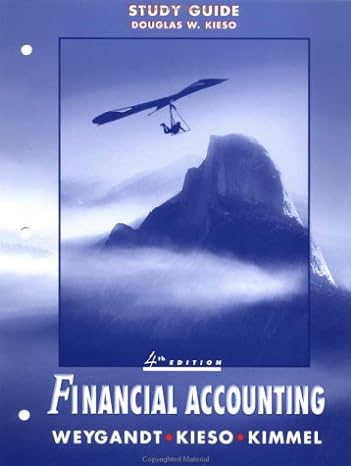41) Who owns goods in transit? o If the shipping terms are FOB destination, the goods belong to the seller after reaching the destination. If the shipping terms are FOB shipping point, the goods belong to the buyer while in transit. O if the shipping terms are FOB shipping point, the goods belong to the seller while in transit. If the shipping terms are FOB destination, the goods belong to the buyer while in transit 42) On November 1, a company purchased Inventory costing $1,000 on account. The payment terms are 2/10,n30. The company paid on November 6 to receive the 2% discount o the shipping terms are FOB destination the goods belong to the buyer while in transla 42 On November 1, a company purchased Inventory costing $1.000 on account. The payment terms are 2/10,n30. The company pald on November 6 to receive the 29 discount What is the impact on the company's financial statements of the cash payment of this account within the discount periode Decrease cash by $980 O Increase liabilities by S1.000 O Decrease inventory by $1.000 Increase inventory by $20 43 A company uses a perpetual inventory system. Beginning inventory for the A period was so ono. Purchases for the period totaled $700,000. A physical 43 A company uses a perpetual inventory system. Beginning inventory for the A period was $130,000. Purchases for the period totaled $700,000. A physical count of ending inventory revealed Inventory of $160,000. Cost of goods sold according to the perpetual system is $600,000 What is the amount of inventory shrinkage? O $30.000 $70,000 @ $100,000 O $130,000 44) With a FIFO inventory cost flow assumption, what is assumed about the units that are sold and the units that remain in ending inventory? New units sold, new units in ending inventory O Old units sold, old units in ending inventory O New units sold, old units in ending inventory Old units sold, new units in ending inventory O MyEducator Tasks 45) The following are inventory purchase and sales data for a company: Purchased on January 11 700 units, 59 cost per unit Purchased on January 16:300 units, $8 cost per unit Sold on January 3.700 units, $10 selling price per unit There was no inventory before the purchase made on January. Assume the company uses LIFO. What is cost of goods sold for January? 0591800 $6.000 $6,800 $7.000 46) The following are inventory purchase and sales data for a company: 46) The following are inventory purchase and sales data for a company Purchased on January 1500 units, 39 cost per unit Purchased on January 16 300 units, 58 cost per unit Sold on January 31: 600 units, $10 selling price per unit There was no inventory before the purchase made on January 1. Assume the company uses FIFO What is the reported cost of ending inventory at the end of January? 51.600 $1.700 $1,800 $2,000 47 On January 1 of Year 1, a company purchased a machine for $10,000. The machine is expected to have a 10-year useful life and a salvage value of $1,000 The company uses straight-line depreciation Mytducator Tasks 47) On January 1 of Year 1, a company purchased a machine for $10,000. The machine is expected to have a 10 year useful life and a salvage value of 1,000. The company uses straight-line depreciation. What is the book value of this machine at the end of Year 67 54,000 $4,600 O 55.000 55,600 (48) On January 1 of Year 1, a company purchased a machine for $10,000. The machine is expected to have an eight-year useful life and a salvage value of $2,000. The company uses double-declining balance depreciation What is the amount of depreciation expense on this machine for Year 17 $1,000 51,250 $2,000 $2.500 MyEducator lasks (49) A company purchased a machine for $8.000. The company has accumulated depreciation of $6,000. The salvage value of the machine is $1,000. The machine was sold for $3,000 cash. Whal is needed in the journal entry to record the sale of this machine? Debit to accumulated depreciation for $6,000 Credit to gain for $2.000 Credit to accumulated depreciation for $2.000 O Debit to cash for $6,000 (50) On January 1 of Year 1, a company purchased a trademark for $400,000 The trademark has an estimated economic life of 20 years. The trademark is assumed to have zero salvage value at the end of its economic useful life. The company uses straight-line amortization. Voor 122 abhi to $6,000 (50) On January 1 of Year 1, a company purchased a uademark for $400,000 The trademark has an estimated economic life of 20 years. The tradernark is assumed to have zero salvage value at the end of its economic useful life. The company uses straight-line amortization. What is the book value of this trademark at the end of Year 13 O $20,000 $140,000 $260,000 $380,000 Next














